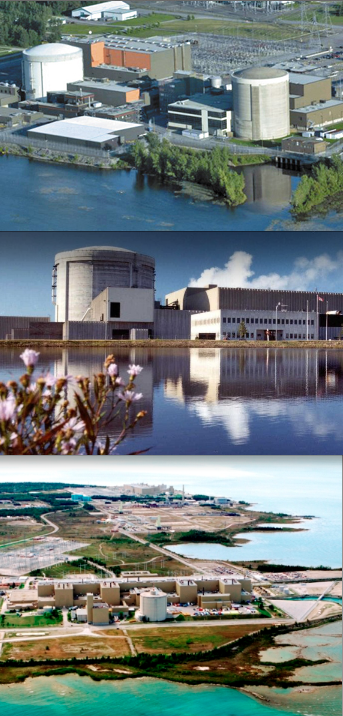Within one month the Canadian Nuclear Safety Commission (CNSC) admitted that three nuclear reactors had accidental spills of Tritium or “heavy water” which is a radioactive hydrogen beta-emitter and known teratogen, mutagen, and carcinogen. Tritium is also the detonating component used in atomic weapons.
On May 2nd the CNSC notified the public of a leak in Quebec’s Gentilly-2 reactor building which caused measurable exposure to workers, but according to the Commission, “releases to the environment were well below regulatory limits”.
On May 8th, CNSC notified the public that a test of the Emergency Water System at the Bruce B nuclear station on Lake Huron in Ontario pumped lake water in and out of the reactor building to confirm flow rate. When the water returned to the lake it was contaminated with tritium, but according to the Bruce Power, “there was no environmental impact” and the tritium released was well below the Derived Release Limits.
On May 23rd, CNSC was informed by New Brunswick Power Nuclear that approximately 300 litres of tritiated water was discovered inside the Point LePreau reactor building due to a faulty valve.
According to TAPCanada.org, the Tritium Awareness Project, “Each tritium atom eventually disintegrates by giving off a beta particle, becoming a non- radioactive helium atom. In living tissue, the beta particle causes cellular damage which may result in cancer, malformed fetuses, or genetic damage. Hence human exposure to tritium oxide (HTO, also known as “tritiated water”) poses health risks”.
Tritium is measured in becquerels, each becquerel marks one unit of atomic disintegration per litre per second.
On 14 March 2011, a leak of 73,000 litres of de-mineralized water, caused by a faulty pump seal, poured into Lake Ontario from the Pickering Nuclear Power Station. The Canadian Nuclear Safety Commission (CNSC) said in a statement, “The radiological risk to the environment and people’s health is negligible.” Citing the 7000 becquerel drinking water limit, an Ontario Power Generation spokesperson said there were "negligible health effects and it raised the level of tritium in the lake about 0.5 becquerels per litre".
Derived release limits are always set to be above what a nuclear reactor emits, and by comparison Canadian guidelines are very lax: The guideline for Canada is 7,000 becquerels per litre for tritium in our drinking water, the European Union guideline is 100 becquerels per litre, California's calls for a limit of 14.8 becquerels per litre, and the Ontario Drinking Water Advisory Council has recommended a limit of 20 becquerels per litre.

